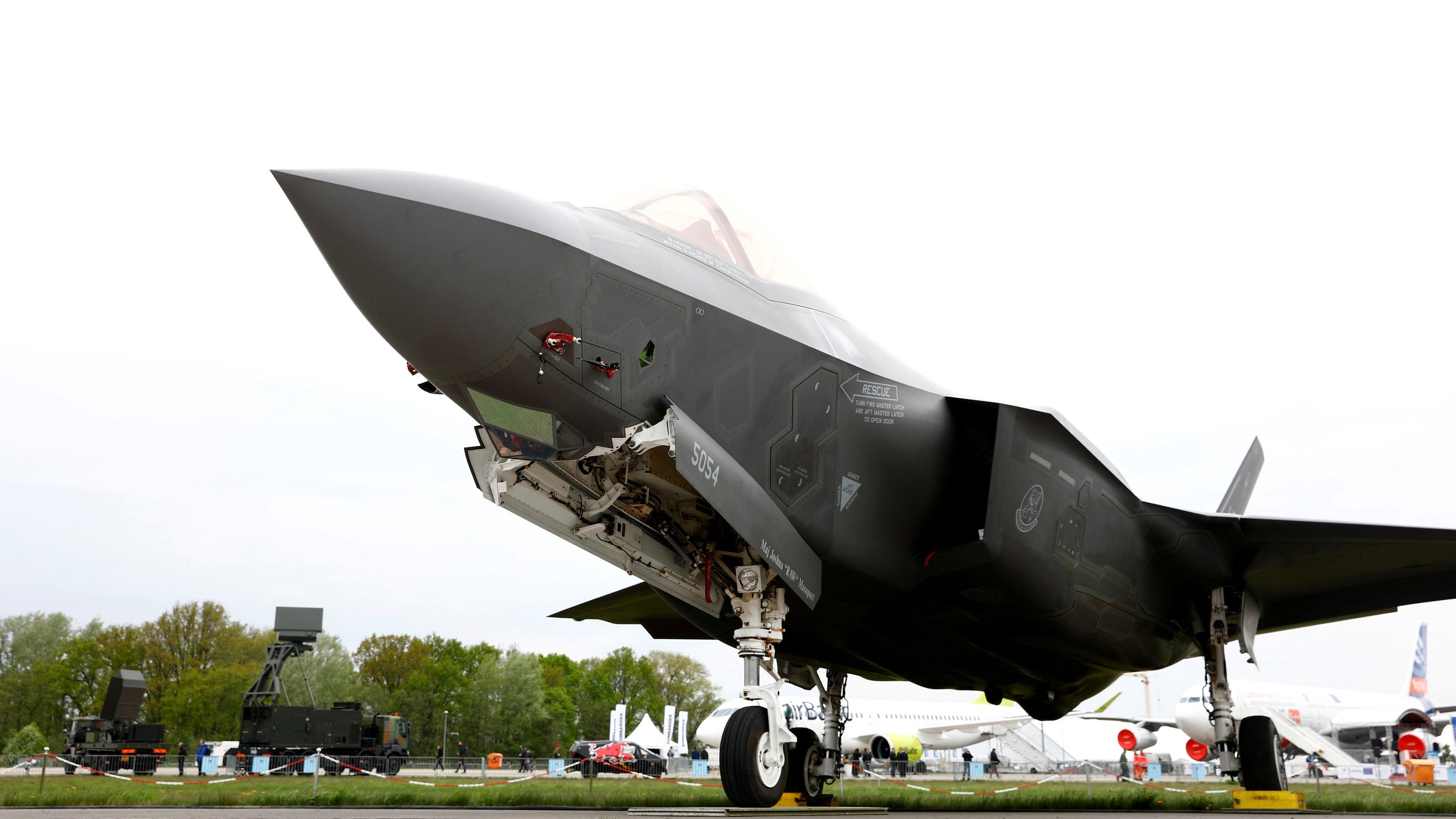
A Lockheed Martin F-35 aircraft is seen at the ILA Air Show in Berlin.
Credit: Reuters File Photo
By Tony Capaccio
The Pentagon’s test office has completed the most comprehensive evaluation yet of Lockheed Martin Corp.’s F-35, the world’s costliest weapons system, but won’t share what it’s found: The report has been marked “classified.”
The test report contains assessments about the fighter jet’s combat effectiveness against a variety of current and future aircraft and air-defense threats. It also assesses how well it can be maintained and its combat-ready status. The test office said the Defense Department “may decide to release an unclassified summary at a future date.”
Asked the Pentagon’s intentions, spokesman Jeff Jurgensen said “the department seeks to be as transparent as possible, consistent with operational security and guidelines that protect controlled and classified information.”
Representative Rob Wittman, chairman of the House armed services subcommittee that oversees the program, said in a statement he looked forward to reviewing the test report and hoped the Pentagon “would be as transparent as possible regarding the US military’s most expensive procurement.” Although many parts “understandably will be classified,” US taxpayers “also deserve to know how their dollars are being spent,” he said.
The classification label for the report of more than 200 pages even applies to a transmittal letter to Defense Secretary Lloyd Austin and defense lawmakers. Pentagon officials are scheduled to meet Thursday to review whether the $438 billion F-35 acquisition program should be allowed to enter full-rate production, a decision that was delayed years beyond its most recent goal of April 2019.
The go-ahead is largely ceremonial because Lockheed already is assembling jets at full-rate production, and the US now has on contract 881 of its planned 2,456 planes, about 36%. Lockheed has delivered almost 1,000 of the jets, with about 650 for the US military and the rest to foreign partners including the UK, Norway, the Netherlands, Israel, South Korea and Japan. Singapore announced last month that it will purchase additional F-35s.
“It is unusual for the entire report to be classified,” said Tom Christie, who led the test office from July 2001 until late January 2005, as the F-35 entered development. “Until just the past few years, the majority of the report would be unclassified with the sensitive information in a separate classified annex.” Recent test office directors have insisted on revealing less about the F-35’s shortfalls, he said.